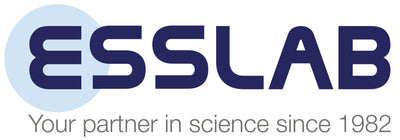Trace Analysis Guide - An Introduction to Sample Preparation
- Home
- Trace Analysis Guide - An Introduction to Sample Preparation
- Inorganic Ventures Tech Centre
- Trace Analysis Guide
- Trace Analysis Guide part 4 - An Introduction to Sample Preparation
Overview
Sample preparation is the third phase of a trace elemental measurement, following the planning and sample collection phases. There is an extensive literature available for sample preparation and every publication dealing with the analysis of a given material will describe a sample preparation procedure. When looking at this literature, the beginner analyst may wonder why certain steps were taken and feel the temptation to eliminate steps that appear unnecessary. Other analysts may wish to add steps or modify the preparation procedure to fit existing equipment and time constraints.
This chapter will provide a foundation for the trace analyst, giving him or her the freedom to make informed decisions. Specifically, the trace analyst will discover how to construct sample preparation procedures for those analytical problems that offer no clear-cut path within the analytical literature.
Because this chapter involves so many topics and more information than would comfortably fit on a single Web page, we've decided to divide it into four parts to be released over the upcoming months.
Preliminary Issues
The following information about the sample and the analytes may not have been available during the initial project planning phase:
- The sample - the quantity, as well as the chemical and physical composition and properties. It may be the 'world's supply' or there may be a limited quantity. Any handling, safety, or stability issues must be noted. All safety data pertaining to the handling and disposal of the sample should be gathered. The sample matrix may be a suspected carcinogen, teratogen, mutagen, poison, or corrosive. Inhalation of fumes or dust may result in short as well as long term health effects. It may be flammable, explosive or irritating to the senses. Special storage, preservation or handling conditions may have to be observed. It may contain one or more functional groups that would require certain precautions when treated with chemicals during the preparation.
If little or nothing is known about the sample, then it should be submitted for key qualitative tests such as an EDXRF scan, % ash, and an IR scan. Modern energy dispersive x-ray fluorescence equipment is key in the identification of matrix elements in the greater-than 10 µg/g concentration range down to atomic number 5. A % ash can give the analyst information regarding the amount of 'combustible' material present and likewise the inorganic content. An infrared scan can identify the material as organic or inorganic with some good indications as to the major chemical composition and for organic matrices the functional groups present. In addition, micro-analytical tests such as a 'C, H, N'(carbon, hydrogen, and nitrogen analysis) are very useful. - The analytes - the identity, chemical form(s) and approximate concentration level(s) of the analytes. Often times, only the identity of the analytes is known in which case a hypothesis of potential or likely forms should be postulated. Are the concentration levels in the wt. %, µg/g, or ng/g level?
- Obvious conflicts - using the information concerning the sample and analyte(s), the trace analyst can identify any number of obvious conflicts. For example, dry ashing samples containing chlorine could result in losses in analytes forming volatile chlorides. Another example -- a sulphated ash of samples containing Ba or Pb as the matrix element will result in insoluble sulphates. The presence of matrix elements such as the Rare Earths or many transition elements tells the analyst about the complexity of the emission or mass spectrum. As always, safety considerations are important. For example, the use of nitric acid without considering the chemical composition of the sample can lead to hazardous results. Samples that may contain significant amounts of alcohols are reacted first with sulfuric acid prior to the addition of nitric acid to avoid explosive reactions.
The initial identification of obvious conflicts is a critical first step in the process of developing a sample preparation technique.
Selecting a Sample Preparation Method
The selection of a preparation method is dependent upon:
- the analyte(s)
- the analyte concentration level(s)
- the sample matrix
- the instrumental measurement technique
- the required sample size
The method selected will require specific sample preparation equipment and reagents. Contamination from the atmosphere, apparatus, and reagents is a key issue when addressing the selection process.
The following checklist should be considered prior to selecting a method:
The identity of the analytes and potential chemical forms. The concentration range(s) of the analyte(s) and the detection limit requirement(s). The chemical and physical composition of the sample matrix. The availability of apparatus and equipment. The sample size that is available or required. The potential for contamination during some part of the sample preparation process.Using the above information, the analyst is in a position to select the preparation technique. This involves choosing the mode of attack (acid digestion, ashing, fusion), the specific chemical reagents, and the container(s) materials needed to carry out the preparation. The analyst must keep in mind that contamination issues, plus any difficulties within the final sample solution matrix, will have an impact upon the ICP-OES and/or ICP-MS measurement techniques.
-
WHAT ARE YOU LOOKING FOR?Search
- Login / Register
- Reference Materials
- Liquid Handling
- Chromatography and Spectroscopy
- Testing
- Labware
- Resources
- Wishlist (0)
- Compare (0)
- Contact Us
